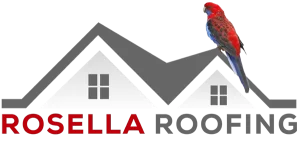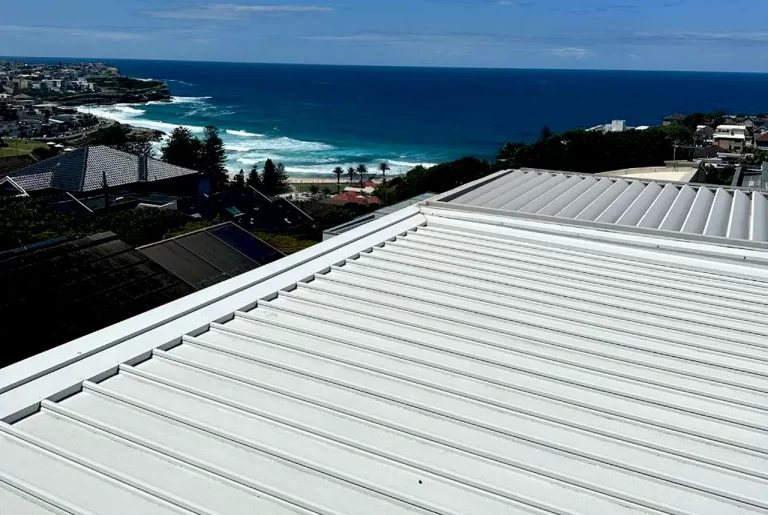Is It Time to Replace Your Roof? Discover the Benefits of Metal Roof Replacement!
Are you tired of constant roof repairs and the never-ending cycle of maintenance? Do you often find yourself worrying about the durability of your roofing material, especially during Sydney’s unpredictable weather? If you’ve been contemplating a roof replacement, you might want to consider the numerous benefits that come with switching to a metal roof.
Metal roofing has gained significant popularity among homeowners in Sydney, and for good reason. With our unique climate, which can swing from scorching heat to torrential rain, having a roof that can withstand the elements is crucial. Traditional roofing materials, such as tiles or shingles, often succumb to wear and tear, leading to leaks and costly repairs. On the other hand, metal roofs are engineered to endure extreme weather conditions, making them a reliable choice for homeowners looking for long-term solutions.
Imagine a roof that not only protects your home but also saves you money on energy bills! Metal roofs are known for their energy efficiency, reflecting solar heat rather than absorbing it. This can significantly reduce the temperature inside your home, leading to lower air conditioning costs during the hot summer months. Additionally, many metal roofing systems are designed with insulation features that further enhance energy efficiency, ensuring your home remains comfortable year-round.
Pros and Cons of Metal Roofing
Pros of Metal Roofing
- Durability and Longevity – Metal roofs can last anywhere from 40 to 70 years, significantly longer than traditional roofing materials like asphalt shingles, which typically last 15 to 30 years. They are resistant to extreme weather conditions, such as heavy rain, high winds, and hail.
- Low Maintenance – Metal roofs require minimal maintenance compared to other materials. They do not rot, crack, or warp, and a simple wash with water is often enough to keep them looking new. This low maintenance requirement can save you time and money in the long run.
- Energy Efficiency – Metal roofing reflects solar heat, which can help keep your home cooler in the summer months. This can lead to reduced air conditioning costs and lower energy bills. Some metal roofs are also designed with insulation options that further enhance energy efficiency.
- Eco-Friendly – Many metal roofing materials are made from recycled content and are themselves recyclable at the end of their lifespan. This makes metal roofing a more sustainable choice compared to traditional roofing materials.
- Fire Resistance – Metal roofs are non-combustible and can provide a higher level of fire resistance compared to other roofing materials. This can be particularly beneficial in areas prone to wildfires.
- Variety of Styles and Colors – Metal roofing is available in a wide range of styles, colors, and finishes, allowing homeowners to choose a look that complements their home’s architecture. Whether you prefer a sleek modern look or a more traditional appearance, metal roofing can meet your aesthetic needs.
- Increased Property Value – Due to their durability and low maintenance, metal roofs can increase the resale value of your home. Potential buyers often view metal roofing as a premium feature, which can lead to a quicker sale.
Cons of Metal Roofing
- Initial Cost – The upfront cost of metal roofing can be higher than that of traditional roofing materials. While the long-term savings may offset this initial investment, homeowners should be prepared for a larger expenditure upfront. However, this initial investment can pay off over time due to the roof’s longevity and minimal maintenance requirements, ultimately saving you money in the long run.
- Noise – Metal roofs can be noisier than other roofing materials during rainstorms or hail. However, proper insulation and underlayment can help mitigate this issue.
- Expansion and Contraction – Metal roofing can expand and contract with temperature changes, which may lead to issues like loosening fasteners or creating gaps if not installed correctly. Proper installation by a qualified professional can mitigate these risks, ensuring a secure and long-lasting roof.
- Denting – While metal roofs are generally durable, they can be susceptible to denting from heavy impacts, such as hail or falling branches. Choosing a thicker gauge metal can help reduce this risk.
- Limited Availability of Skilled Installers – Not all roofing contractors are experienced in installing metal roofs. It’s essential to find a qualified professional to ensure proper installation, which can sometimes be a challenge.
- Potential for Rust – While many metal roofs come with protective coatings to prevent rust, uncoated or poorly maintained metal roofs can be susceptible to corrosion over time, particularly in coastal areas with high salt exposure.
- Thermal Conductivity – Metal roofs can absorb heat, which may increase the temperature in your attic if not properly insulated. This can lead to higher cooling costs in warmer climates. However, with the right insulation and ventilation, you can effectively manage the temperature, keeping your home comfortable and energy-efficient.
Moreover, the aesthetic appeal of metal roofs cannot be overlooked. Available in a variety of styles, colours, and finishes, metal roofing can complement any architectural style, from contemporary to traditional. Whether you prefer a sleek, modern look or a more classic appearance, there’s a metal roofing option that will suit your taste and enhance your home’s curb appeal. This versatility not only boosts your home’s aesthetic but can also increase its market value.
Key Benefits of Metal Roof Replacement
- Durability and Longevity – Metal roofs can last 40-70 years, significantly outpacing traditional roofing materials. They are resistant to extreme weather, fire, and pests, making them an ideal choice for Sydney’s diverse climate. Unlike tiles that can crack or shingles that can curl, metal roofs are designed to withstand the test of time.
- Low Maintenance – One of the most appealing aspects of metal roofing is its low maintenance requirements. Unlike traditional roofs that may require regular inspections and repairs, metal roofs are largely self-maintaining. A simple wash with a hose or rain will often suffice to keep them looking new. This means less hassle and more time to enjoy your home.
- Energy Efficiency – As mentioned earlier, metal roofs reflect solar heat, which can lead to significant energy savings. Many metal roofing systems are also designed to be installed with insulation, further enhancing their energy-saving capabilities. This can lead to lower energy bills and a reduced carbon footprint.
- Eco-Friendly – Metal roofs are often made from recycled materials and are fully recyclable at the end of their life cycle. Choosing a metal roof is not just a smart financial decision; it’s also an environmentally responsible choice that contributes to sustainability efforts.
- Increased Property Value – Investing in a metal roof can add substantial value to your home. Potential buyers often see metal roofing as a premium feature, which can translate into a higher resale price and quicker sales.
At Rosella Roofing, we understand the importance of having a reliable roof over your head. Our team of experienced professionals is dedicated to providing top-quality metal roofing solutions tailored to your needs. With our commitment to excellence and customer satisfaction, you can trust us to transform your home with a roof that combines functionality and style. Don’t wait any longer—get in touch with Rosella Roofing today for a free consultation and let us help you protect your home for years to come!
Upgrade Your Home with Metal Roofing Today!
References:
- Metal Roofing Alliance. (n.d.). Benefits of Metal Roofing.
- Australian Government – Your Home. (n.d.). Roofs.
- Choice. (2024). Metal Roofing: Pros and Cons.
- Green Building Council of Australia. (n.d.). Sustainable Roofs.


